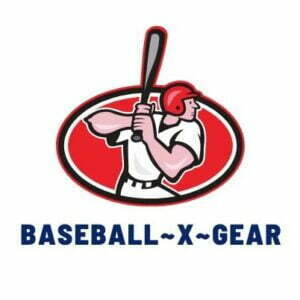Many baseball and softball players often ask me how a radar gun can improve pitching and hitting.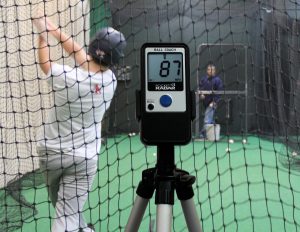
Howdy friends and welcome back to BaseballXGear!
Since this question has been posed to me quite a bit lately, I would like to go through some of the reasons why I like to incorporate the use of a radar gun.
As many of you know, I am an advocate for the use of radar guns.
In today’s post we will discuss some of the reasons why I think they are a great tool to aid in the development of any player’s skills.
Let’s take a look at how a radar gun can improve pitching and hitting.
How A Radar Gun Can Improve Pitching And Hitting
While I use radar guns primarily in baseball nowadays, I also used them a lot throughout my daughter’s softball 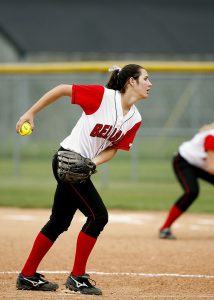 playing career to help improve all aspects of her game.
playing career to help improve all aspects of her game.
Radar guns can be used in just about every sport you can think of where speed is a factor. Whether it’s tennis, lacrosse, softball or baseball, radar guns are a great tool to help improve your skills.
At every practice, no matter where you go, there will always be pitchers and batters practicing.
My thought on this is, if you are going to be practicing pitching and hitting, why not get the most out of each practice session?
Since the pitcher is practicing to get better, why not use a tool that can help them improve faster and better?
Practice is what I do with my players and kids to improve their performance on the field. Incorporating the use of a radar gun during those practices is a great way to motivate them to learn, and help them perform at the best of their ability.
How A Radar Gun Can Improve Pitching
Let’s get started with pitching since it is the number 1 reason why players are interested in radar guns.
Pitch Grips
You would be amazed at the difference in velocity a slight adjustment on the grip of a four seam fastball can 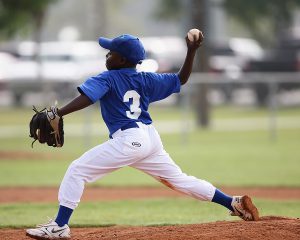 make.
make.
Slight adjustments to the grip and the pressure applied is the main use I get out of a radar gun.
Depending on age and ability, I try to keep my bullpen sessions to 50 pitches or less.
During these sessions, I will have my pitchers concentrate on one pitch and one pitch only.
We will adjust grips and pressure points until I feel the pitcher has achieved the grip that will work the best for them.
I will then record the speeds of the last 25 pitches to show the pitcher how the grip and pressure adjustments have improved their speed.
This works on any pitch.
One of my favorite pitches is the change up. Making adjustments to grips and pressure and noting the speeds on a radar gun is how I get pitchers to understand that pitching is not all about throwing 100 MPH.
Developing a good change up to compliment the fast ball is what I like to teach, especially at younger ages.
On a side note, I also don’t teach the curve ball until at least age 12 or 13. Some kids will develop sooner than others, so I leave this up to the parents to decide their kid’s level of development.
Body Position
Teaching proper form is just as important as pitch grips.
Minor adjustments to form and delivery can produce major improvements in speed.
When practicing pitching, I show them how these minor adjustments can make improvements by using a radar  gun.
gun.
You can guess all you want, but without the proof provided by a radar gun, it is simply guessing.
I can adjust the form and pitch grips with most players and easily see 5 mph improvements in just a few sessions.
This relies on the speeds provided by a radar gun.
Adjusting pitch grips and delivery form to improve speeds are the main reasons why I love using a radar gun for pitching.
Next up we will discuss batting.
How A Radar Gun Can Improve Hitting
Just like with pitching, a batters stance and swing form play a crucial role in hitting.
I use a radar gun during batting practice to determine ball exit speed.
It still amazes me how making just a few minor adjustments in a batters form can dramatically improve how 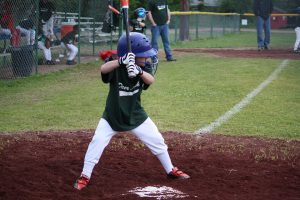 hard they can hit the ball.
hard they can hit the ball.
The radar gun I personally use the most is the Pocket Radar Ball Coach. This radar gun allows me to measure the speed of the pitch and the exit speed of a batted ball simultaneously.
Not all radar guns offer this feature, but many do. It is not a must, but I do like the convenience.
Adding 5-10 MPH to how hard you hit the ball can easily turn singles into doubles and doubles into triples.
As I said earlier, trying to determine what form gives the player optimal performance without the aid of a radar gun is just guess work.
How A Radar Gun Can Improve Pitching And Hitting – Wrap It Up
Pitching and hitting are the 2 main reasons why I like to use radar guns.
Some of the other things I like using a radar gun to improve player performance include base running, throws from the outfield, throws on the infield and throws from the catcher to the bases.
Using a radar gun to help improve a catchers abilities will definitely prevent a lot of stolen bases.
Using the radar gun to teach your infielders proper form and mechanics will help them learn how to start making double, and even triple plays.
Incorporating the use of a radar gun into your practices will help players to improve all aspects of their game.
I have been using radar guns for years and I rely on the data they provide to help players reach their full potential.
I have had the pleasure of working with many radar guns over the years. If you would like to check out my top 3 recommended radar guns in their respective price ranges, click on the button below to read about about each one.
In the article, I talk a little about each radar gun and link to my full reviews so you can do some in depth research.
I hope you enjoyed this article on how a radar gun can improve pitching and hitting.
If you have any questions, please leave a comment below or use the contact button to send me an email and I will get back with you as soon as possible.
Thanks for stopping by ~Jeremy

